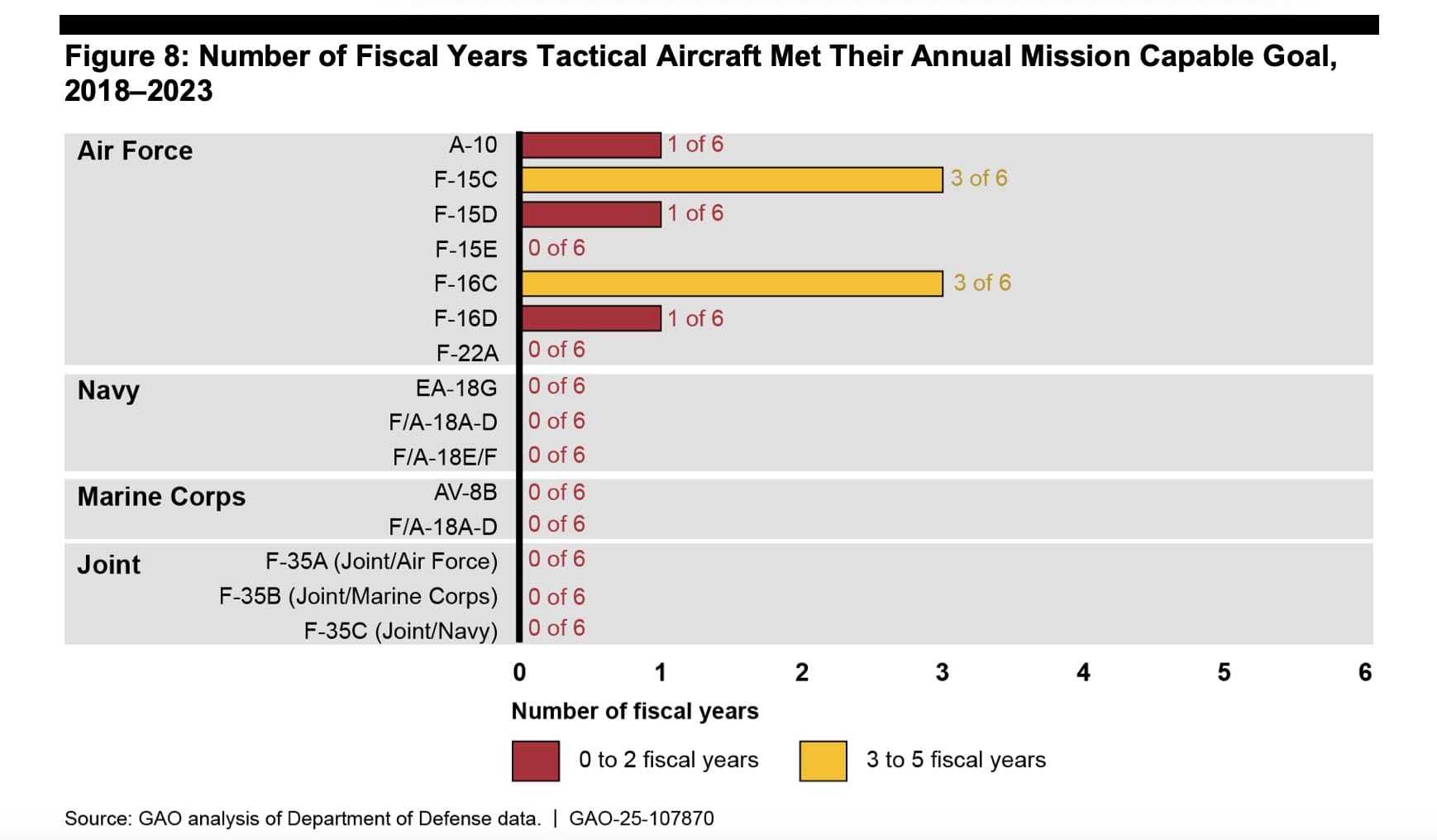October 24 2024
State of the race; Medicare’s extra payments; Inflation data disconnect; F-35s; Return of total war; Telegraph

1. State of the Race: Harris Calls Herself the Underdog and Trump a Fascist
2. Medicare Advantage Insurers Reap Billions in Extra Payments from Questionable Diagnoses
3. Disconnect Between US Inflation Data and Everyday Expenses
4. F-35 Program Continues to Miss Readiness Goals Despite Billions in Spending
5. End of Limited War: Ukraine and Middle East Conflicts Signal Return of Total War
10/24/1861 Western Union completes the first transcontinental telegraph line
See the new Ad Astra Podcast! Released on Apple and Spotify around 10a CST.
Editors note: We’re still waiting on Israel’s retaliatory strike on Iran. It will come and when it does, we’ll cover it.
1. State of the Race: Harris Calls Herself the Underdog and Trump a Fascist
A. Kamala Harris calls herself the underdog against Donald Trump. Making that argument is an old ploy to motivate voters, but with two weeks until Election Day the vice president’s top advisers and allies are worrying it might be true. Harris’s struggle to nail down support from key voting blocs in the Democratic coalition has left her team unsettled, according to interviews with aides and advisers. She enjoys strong support with women, but she has a clear problem with men, including both Black men and white working-class men. She also has failed to shore up support among Michigan’s Arab-Americans, who have been frustrated with the Biden administration’s handling of the widening conflict in the Middle East. “People were feeling better three weeks ago,” said one Democrat close to the campaign
B. Kamala Harris called Donald J. Trump a fascist on Wednesday evening, elevating what until recently had been an argument made only in the lower ranks of a Democratic Party that has spent years attacking him as anti-democratic, unfit to serve and a criminal.
Article Source: WSJ, NYT
2. Medicare Advantage Insurers Reap Billions in Extra Payments from Questionable Diagnoses
Private Medicare insurers got about $4.2 billion in extra federal payments in 2023 for diagnoses from home visits the companies initiated, even though they led to no treatment, a new inspector general’s report says. The extra payments were triggered by diagnoses documented based on the visits, including potentially inaccurate ones, for which patients received no other medical services, the report says. Insurers offering private plans under Medicare, known as Medicare Advantage, are paid more when patients have costly conditions. Each visit was worth $1,869 on average to the insurers, according to the Office of Inspector General for the Department of Health and Human Services. The findings are similar to those of a Wall Street Journal investigation published in August. It showed that insurers between 2019 and 2021 pocketed an average of $1,818 for each visit based on diagnoses for which people received no other treatment. The OIG recommended in Thursday’s report for the first time that Medicare restrict or even cut off payments for diagnoses from these visits.
Article Source: WSJ
3. Disconnect Between US Inflation Data and Everyday Expenses
Price pressures have eased substantially over the past two years, but a disconnect remains between what US inflation data show and what millions of Americans experience with their finances. That’s in part because price levels are still higher than they were before the pandemic. Another explanation: the government’s key inflation measure excludes a number of major everyday costs that have surged in recent years. Property taxes, tips and interest charges from credit cards to auto loans aren’t factored into the Bureau of Labor Statistics’ consumer price index. The CPI also leaves out a key aspect of home insurance, as well as brokerage fees and under-the-table payments to babysitters and dog walkers — costs that can add up. “The CPI is capturing the goods and services that you purchased for consumption, but there are things that affect your cost of living that are outside of that,” said Steve Reed, a BLS economist who works on the index. “And so it can’t realistically be priced.” The CPI rose 2.4% in the year through September, the smallest advance since early 2021. Inflation has subsided since the Federal Reserve started hiking interest rates in 2022, which sent rates for mortgages, credit cards, auto loans and student debt soaring. While interest payments make up a big chunk of many Americans’ expenses, the CPI measures the price changes in the items bought, not the debt incurred to finance those purchases. For example, roughly $628 billion in credit card debt is rolled over or unpaid every month when the typical interest rate charged is around 22%. That means that while the underlying purchased item or service was included in the official measure, millions of dollars in credit card interest payments aren’t being counted.
Article Source: Bloomberg
4. F-35 Program Continues to Miss Readiness Goals Despite Billions in Spending
The F-35 program has failed to meet a key readiness metric for six straight years, despite a steady increase in spending to operate and maintain the aircraft, according to a new report from a government watchdog agency. The Pentagon spent more than $12 billion to operate and maintain the F-35 fleet from fiscal 2018 to 2023, according to the Government Accountability Office. But the three F-35 variants were not alone. Seven of the Pentagon’s other tactical aircraft programs also failed to meet mission-capable goals for six years straight, and another five programs missed the target in three, four, or five of those years. The mission-capable rate is the percentage of time during which the aircraft can fly and perform at least one of its tasked missions. “None of the 15 tactical aircraft variants met their mission-capable goals in fiscal year 2023. Only two—the F-15C and the F-16C—met their annual goals in at least half of the years since fiscal year 2018,” the GAO said. Last year, the F-35 Joint Program Office launched an effort—the “War on Readiness”—to raise the aircraft’s mission-capable rate by 10 percent by the end of March 2024. However, officials said readiness only rose 2.6 percent within that year, up to 55.7 percent.

Article Source: Defense One
5. End of Limited War: Ukraine and Middle East Conflicts Signal Return of Total War
Every age had its own kind of war, its own limiting conditions, and its own peculiar preconceptions,” the defense theorist Carl von Clausewitz wrote in the early nineteenth century. There is no doubt that Clausewitz was right. And yet it is surprisingly difficult to characterize war at any given moment in time; doing so becomes easier only with hindsight. Harder still is predicting what kind of war the future might bring. When war changes, the new shape it takes almost always comes as a surprise. For most of the second half of the twentieth century, American strategic planners faced a fairly static challenge: a Cold War in which superpower conflict was kept on ice by nuclear deterrence, turning hot only in proxy fights that were costly but containable. The collapse of the Soviet Union brought that era to an end. In Washington during the 1990s, war became a matter of assembling coalitions to intervene in discrete conflicts when bad actors invaded their neighbors, stoked civil or ethnic violence, or massacred civilians. After the shock of the 9/11 attacks in 2001, attention shifted to terrorist organizations, insurgents, and other nonstate groups. The resulting “war on terror” pushed thinking about state-on-state conflict onto the sidelines. War was a major feature of the post-9/11 period, of course. But it was a highly circumscribed phenomenon, often limited in scale and waged in remote locations against shadowy adversaries. For most of this century, the prospect of a major war among states was a lower priority for American military thinkers and planners, and whenever it took center stage, the context was usually a potential contest with China that would materialize only in the far-off future, if ever. Then, in 2022, Russia launched a full-scale invasion of Ukraine. The result has been the largest land war in Europe since World War II. And although forces under Russian and Ukrainian command are the only troops fighting on the ground, the war has reshaped geopolitics by drawing in dozens of other countries. The United States and its NATO allies have offered unprecedented financial and materiel support to Ukraine; meanwhile, China, Iran, and North Korea have all assisted Russia in crucial ways. Less than two years after Russia’s invasion, Hamas carried out its brutal October 7 terrorist attack on Israel, provoking a highly lethal and destructive Israeli assault on Gaza. The conflict quickly widened into a complex regional affair, involving multiple states and a number of capable nonstate actors. In both Ukraine and the Middle East, what has become clear is that the relatively narrow scope that defined war during the post-9/11 era has dramatically widened. An era of limited war has ended; an age of comprehensive conflict has begun. Indeed, what the world is witnessing today is akin to what theorists in the past have called “total war,” in which combatants draw on vast resources, mobilize their societies, prioritize warfare over all other state activities, attack a broad variety of targets, and reshape their economies and those of other countries. But owing to new technologies and the deep links of the globalized economy, today’s wars are not merely a repeat of older conflicts.
Article Source: Foreign Affairs
10/24/1861 Western Union completes the first transcontinental telegraph line
On October 24, 1861, workers of the Western Union Telegraph Company link the eastern and western telegraph networks of the nation at Salt Lake City, Utah, completing a transcontinental line that for the first time allows instantaneous communication between Washington, D.C., and San Francisco. Stephen J. Field, chief justice of California, sent the first transcontinental telegram to President Abraham Lincoln, predicting that the new communication link would help ensure the loyalty of the western states to the Union during the Civil War.
Sources
1. A https://www.wsj.com/politics/elections/kamala-harris-voters-polls-democrats-election-fears-7fd1a312?st=XFDpXb&reflink=article_copyURL_share
B https://www.nytimes.com/2024/10/24/us/politics/harris-town-hall-cnn-takeaways.html?smid=nytcore-ios-share&referringSource=articleShare
2. https://www.wsj.com/health/healthcare/medicare-insurers-extra-payments-72d09393?st=CoLx2d&reflink=article_copyURL_share
3. https://www.bloomberg.com/news/articles/2024-10-22/us-cpi-inflation-doesn-t-account-for-some-of-your-biggest-expenses
4. https://www.defenseone.com/threats/2024/10/f-35s-still-missing-readiness-goalsdespite-rising-spending/400424/
5. https://www.foreignaffairs.com/ukraine/return-total-war-karlin
